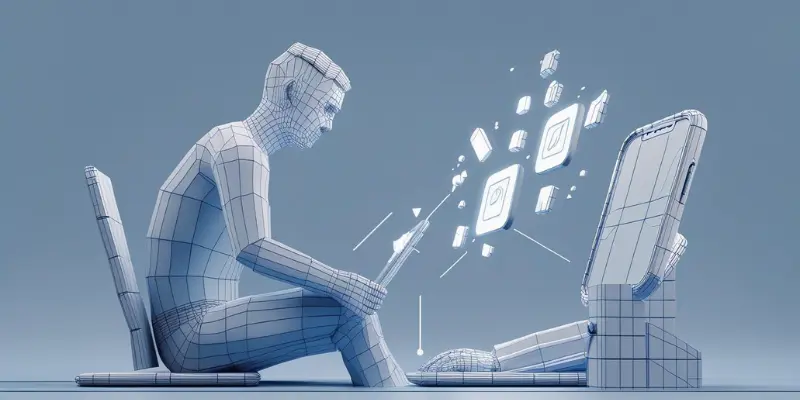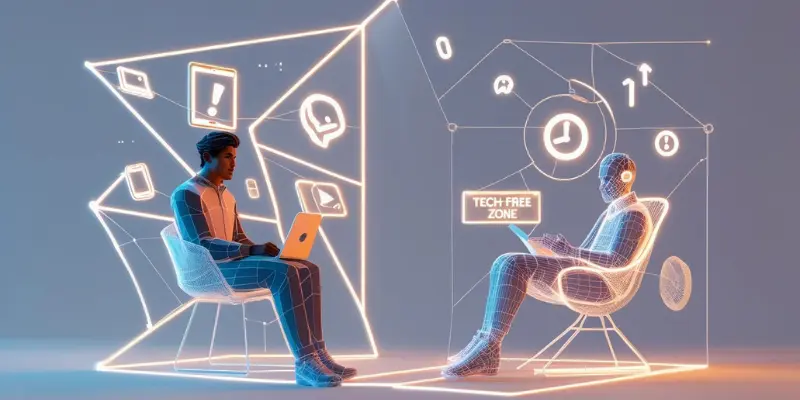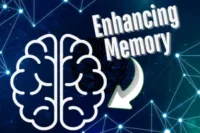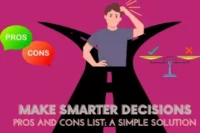Stop the Overwhelm: 7 Proven Strategies to Manage Digital Overload
Published: 17/06/2025
Do you ever feel like your phone is an extension of your hand, buzzing constantly with demands? Or that your inbox is a bottomless pit of tasks, each email pulling you further from focus? If you’re nodding in agreement, you’re not alone. In today’s fast-paced digital world, it’s easy to get swept away in the relentless tide of notifications, emails, and social media updates.
This phenomenon, known as digital overload, is more than just an inconvenience; it’s a modern-day epidemic. Digital overload refers to the mental and physical stress that arises from constant digital information and connectivity. The constant bombardment of digital noise leads to distracted thinking, fragmented attention, and an inability to fully disconnect, even during moments of rest.
The impact is far-reaching. In fact, research shows that the average worker checks their email every 37 minutes and takes 23 minutes to refocus after an interruption. Employees spend up to 28% of their workweek on emails alone, reducing productivity and increasing stress levels. Mental fatigue, burnout, and anxiety have become the byproducts of a hyper-connected lifestyle.
But what if you could take back control? This guide reveals 7 proven strategies to help you manage digital overload, regain focus, and find calm in your busy life.
Understanding Why We’re Overloaded
We’re living in an “always-on” world, where constant notifications and the fear of missing out (FOMO) keep us plugged in 24/7. The rise of multiple communication apps has made it harder to escape, blurring the lines between work and personal life. Add to that the pressure of always being reachable, and it’s no wonder we feel overwhelmed. Understanding these culprits is the first step in tackling digital overload.
Strategy 1: Master Your Notifications, Master Your Mind
Concept: Taking control over your notifications means taking control over your attention. We all know how it feels to be constantly interrupted by pings, dings, and pop-ups from our devices. It’s like having an invisible leash attached to you, always pulling your focus away from what really matters. The key is to regain control, not let your devices run the show.

Actionable Tips:
- Turn off non-essential notifications: Most apps send notifications you don’t need. Social media, news apps, even games can all ping you with updates that can wait. By turning off notifications for apps that don’t require immediate attention, you can stop these constant distractions and start focusing on your tasks without interruptions.
- Utilize “Do Not Disturb” modes: Phones, tablets, and computers have a “Do Not Disturb” feature that allows you to silence all notifications for a set period. Use this for focused work blocks, personal time, or when you need uninterrupted moments of peace.
- Schedule specific times to check messages/emails: Instead of checking your messages or emails every time your phone buzzes, set designated times throughout the day for these activities. This helps you avoid reacting instantly and allows you to stay in control of your time. Whether it’s once every hour or twice a day, sticking to a schedule can dramatically cut down on distractions.
Why it works: Constant interruptions not only break your focus but can also lead to mental fatigue. When your phone is constantly buzzing, it’s like being in a conversation with multiple people at once, none of whom are waiting their turn. By mastering your notifications, you take back control of your focus. When you’re less distracted, your mind can stay sharp and calm, improving both productivity and mental clarity.
If you don’t control your technology, it will control you.Cal Newport, Computer Science Professor and Author of ‘Digital Minimalism’ & ‘Deep Work’
Strategy 2: Implement Digital Boundaries (Time & Space)
Concept: One of the simplest but most effective ways to manage digital overload is by creating clear boundaries between your digital life and personal life. When your phone or computer is always within reach, it’s easy for work and technology to seep into your personal time. Setting boundaries helps you take back control and ensures that your digital devices don’t take over every aspect of your life.

Actionable Tips:
- Establish “digital-free” hours: Start by setting specific times each day when you’re not using any digital devices. For example, the first hour after waking up and the last hour before bed can be completely free of screens. This allows you to start and end your day without distractions, helping you maintain mental clarity and a more restful sleep.
- Create “tech-free zones” in your home: Designate certain areas in your home where devices are off-limits, like the bedroom or dining table. These spaces should be where you connect with family, unwind, or focus on offline activities like reading or cooking. Having a space free from the pull of screens can help promote relaxation and foster deeper, more meaningful connections with the people around you.
- Communicate your boundaries to colleagues, friends, and family: Let others know when you’re unavailable or need some tech-free time. Whether it’s turning off work-related notifications after hours or setting limits on social media interaction, clearly communicating your boundaries ensures that others respect your need for downtime and helps you avoid the pressure to always be “on.”
Why it works: Setting boundaries promotes mental rest by allowing you to step away from constant digital stimulation. It prevents burnout by ensuring you don’t overwhelm yourself with endless screen time. Plus, tech-free zones and specific hours help strengthen relationships by allowing more undistracted, quality time with the people who matter most. When you reclaim space and time away from screens, you give your mind and body the recovery they need to feel refreshed and focused.
Strategy 3: Practice Mindful Technology Consumption
Concept: In a world where we’re constantly bombarded with information, being intentional about how and why you use your digital devices is a game changer. Practicing mindful technology consumption means slowing down and asking yourself if the content you’re engaging with is truly valuable, necessary, or just adding to the noise. It’s about being more present in your digital life and consuming content in a way that enhances your well-being instead of draining it.

Actionable Tips:
- Digital minimalism: Start by decluttering your digital life. Unsubscribe from emails that no longer serve you, and unfollow accounts or pages on social media that don’t add value to your life. The less content you have fighting for your attention, the easier it becomes to focus on what matters.
- Question before you click: Before you open that email or dive into an article, pause for a moment and ask yourself, “Is this essential? Is this helpful?” Being conscious of what you’re engaging with helps prevent you from mindlessly scrolling or consuming content that doesn’t benefit you.
- Engage actively with content rather than passive scrolling: Instead of endlessly scrolling through feeds, take time to engage meaningfully with content. Like, comment, or share posts that resonate with you or contribute to your growth. Active participation leads to more enriching experiences, while passive scrolling often leaves you feeling drained.
- Consider a “digital distraction test”: Before using any device or app, set a timer and challenge yourself to see how long you can stay focused without getting distracted. This test helps identify the apps or websites that cause the most distractions, giving you a clear idea of where to set limits.
Why it works: Practicing mindful technology consumption helps reduce information overload by cutting out unnecessary noise. When you’re more intentional about your digital interactions, you improve the quality of the content you consume and engage with things that genuinely matter to you. This approach not only minimizes digital stress but also boosts productivity and mental clarity, giving you more control over how you spend your time online.
Strategy 4: Embrace Regular Digital Detoxes & Breaks
Concept: Taking intentional breaks from screens is a powerful way to reset your mind and body. In our hyper-connected world, it’s easy to get caught in the cycle of non-stop digital engagement. But regular digital detoxes give you the space you need to recharge. Stepping away from your devices—even briefly—helps combat digital burnout, refreshes your focus, and improves your overall well-being.
Actionable Tips:
- Scheduled short breaks during work: Take 5-10 minute breaks throughout your workday to step away from your screen. This gives your eyes a break and helps prevent mental fatigue. Whether it’s a quick stretch, a deep breath, or just closing your eyes for a few moments, these mini-breaks can significantly boost your productivity.
- Longer breaks: Set aside time for longer breaks where you completely unplug. Try an hour during the day where you step away from all devices, or dedicate a half-day each weekend to be tech-free. Use this time for activities that don’t involve screens, like reading a book, cooking, or spending time outside.
- Go for walks, stretch, get a coffee break: Sometimes, all it takes is a simple change of scenery. Taking a walk outside, stretching, or grabbing a coffee helps you step away from your devices and refresh your mind. Even a short walk around the block can work wonders for your focus and creativity.
- Consider a full “digital weekend detox”: If you’re feeling especially overwhelmed, try a full weekend without screens. This may seem daunting at first, but it can be incredibly freeing. Use the time to reconnect with offline activities or simply enjoy some quiet, uninterrupted time.
Why it works: Digital detoxes and breaks help reset your mind by reducing eye strain, mental fatigue, and constant stimulation. These moments of disconnection allow your brain to recharge, boosting creativity and physical well-being. When you return to your work or digital life, you’ll find that you’re more focused, clear-headed, and productive. Regular breaks also give you the chance to nurture your physical health—whether it’s through stretching, walking, or simply resting your eyes. Taking time away from screens is essential for maintaining long-term mental and physical health.
Strategy 5: Streamline Your Digital Workflows & Communication
Concept: Optimizing how you interact with digital tools is essential for working smarter, not harder. When you streamline your digital workflows and communication, you reduce unnecessary friction, improve efficiency, and ultimately free up more time for focused work. The goal is to simplify the way you handle tasks, messages, and meetings so that your digital interactions are more productive and less overwhelming.
Actionable Tips:
- Consolidate communication channels where possible: Instead of juggling multiple apps and platforms for communication, use tools that centralize everything in one place. For example, project management tools like Trello, Asana, or Slack can help you organize tasks, share updates, and communicate with colleagues without bouncing between email, instant messaging, and other channels.
- Reply to emails properly: Avoid sending quick, one-line responses that lead to never-ending email chains. Take a moment to craft thoughtful replies that address all points and avoid unnecessary back-and-forth. Setting a clear agenda in your emails can prevent confusion and keep conversations on track, saving everyone time.
- Set clear agendas and time limits for digital meetings: Digital meetings can easily drag on longer than necessary. To keep things focused and efficient, always set a clear agenda beforehand and establish a time limit. You can even use digital tools like Google Calendar or Zoom’s scheduling features to ensure meetings stay on track.
- Automate repetitive digital tasks where possible: Take advantage of automation tools to handle repetitive tasks, such as scheduling social media posts, sending reminders, or processing data. Apps like Zapier and IFTTT can help automate workflows, allowing you to focus on more strategic, high-impact tasks.
Why it works: Streamlining your digital workflows reduces the cognitive load associated with managing multiple apps, emails, and tasks. When everything is organized and consolidated, you save time, reduce stress, and increase clarity in your work. The more efficiently you can handle digital communication, the less mental energy you waste on trivial details, giving you more bandwidth to focus on what truly matters. By optimizing your workflows, you create more space for productivity, creativity, and mental well-being.
Strategy 6: Prioritize Offline Connections & Activities
Concept: Balancing your digital life with real-world interactions and offline hobbies is key to managing digital overload. While technology offers convenience and connectivity, it can also lead to feelings of isolation and burnout. By making time for activities and relationships that don’t involve screens, you can recharge mentally, strengthen your connections with others, and create a healthier balance in your life.

Actionable Tips:
- Make time for face-to-face interactions: In a world of texts, emails, and video calls, it’s easy to forget the value of in-person connections. Make it a priority to spend time with friends, family, or colleagues in real-life settings, whether it’s a coffee date, a lunch outing, or a casual hangout. These interactions not only deepen relationships but also allow for richer, more meaningful conversations.
- Engage in hobbies that don’t involve screens: Step away from your devices and engage in activities that nourish your mind and body without screens. Whether it’s reading a physical book, playing a sport, crafting, or cooking, find hobbies that bring you joy and fulfillment outside the digital world.
- Spend time in nature: There’s nothing like a walk in the park or a weekend hike to reset your mind. Nature has a natural way of calming the mind, reducing stress, and giving you a break from the constant buzz of technology. Whether it’s a stroll around the block or a weekend camping trip, spending time outdoors can provide a much-needed mental break from screens.
We expect more from technology and less from each other.Sherry Turkle, MIT Professor and Author of ‘Alone Together: Why We Expect More from Technology and Less from Each Other
Why it works: Prioritizing offline connections and activities helps reduce feelings of isolation that can stem from spending too much time online. Engaging in real-world interactions boosts your mental health, strengthens relationships, and allows you to connect with others in more meaningful ways. Additionally, stepping away from screens gives your mind a much-needed break, improving focus, creativity, and overall well-being. When you balance your digital life with offline activities, you create space for relaxation, joy, and mental rejuvenation.
Strategy 7: Leverage Tools & Support Wisely
Concept: Technology doesn’t always have to be the problem—it can also be the solution. By using the right tools and support systems, you can actively manage your digital well-being. Whether it’s through focus-enhancing apps, digital stress self-assessments, or professional guidance, leveraging these resources can help you regain control and maintain balance in the digital world.
Actionable Tips:
- Utilize app blockers or focus apps: If you find yourself constantly distracted by social media or websites, apps like Freedom, StayFocusd, or the Pomodoro timer can help. These tools allow you to block distracting apps or websites for set periods, allowing you to concentrate on your tasks without the constant pull of notifications. The Pomodoro technique, for example, encourages focused work in short, timed bursts followed by brief breaks, improving both focus and productivity.
- Explore self-assessment tools for digital stress (like DSS): Digital Stress Scales (DSS) or similar self-assessment tools can help you measure how much digital overload is impacting your mental health. These tools guide you to identify stressors related to technology and help you understand where you need to make changes.
- Consider the benefits of mentorship: Sometimes, the best way to manage digital overload is through guidance from others. Whether it’s a mentor, a coach, or a colleague, mentorship can offer valuable advice on how to prioritize tasks, set boundaries, and communicate more effectively. A mentor can help you identify patterns in your behavior that contribute to digital stress and offer solutions.
- Know when to seek professional help: If digital overload is severely affecting your mental health, it may be time to reach out to a counselor or therapist. Mental health professionals can help you work through stress, anxiety, or burnout caused by constant digital engagement and provide expert strategies to cope.
Why it works: These tools and support systems provide structured ways to manage your digital habits and mental well-being. By using apps to block distractions, self-assessment tools to track your stress levels, and mentors to guide you, you can identify patterns and take proactive steps to improve your digital life. Additionally, seeking professional help when needed ensures that you’re not facing the challenges of digital overload alone. It offers expert guidance and practical strategies that can significantly improve your ability to thrive in a tech-driven world.
Beyond the Strategies: Sustaining Digital Well-being
Consistency is Key
Managing digital overload isn’t a one-time fix; it’s an ongoing process. The strategies you’ve implemented need to become habits—something you practice daily to maintain balance. Over time, these habits will help you create a healthier relationship with technology.
Listen to Your Body & Mind
Stay in tune with how your body and mind are responding. If you start to feel overwhelmed or fatigued, it’s a sign that your digital boundaries or strategies need adjustment. Regularly check in with yourself and make tweaks when needed to avoid slipping back into burnout.
The Reward
When you maintain a balanced digital life, the benefits are clear. You’ll experience greater focus, reduced stress, and improved overall well-being. By reclaiming your time and energy, you’ll create space for the things that truly matter, both online and offline. Digital well-being isn’t just about reducing screen time; it’s about living a more intentional, peaceful life.
Conclusion : Reclaim Your Calm, Reclaim Your Life
By implementing these 7 proven strategies, you can take back control of your digital environment and transform the way you interact with technology. Whether it’s mastering your notifications, setting clear digital boundaries, or embracing mindful technology consumption, each strategy helps you regain focus, reduce stress, and find moments of calm amid the chaos of constant connectivity.
Remember, in our hyper-connected world, it’s possible to thrive, not just survive. You can create a balanced digital life that supports your well-being and productivity, instead of overwhelming you.
Now, it’s time to take the first step. Which strategy will you try first? Share your biggest digital challenge in the comments below!
Your Digital Overload Questions, Answered
Digital overload is the mental and physical stress caused by constant exposure to digital information and demands. It can lead to overwhelm, fatigue, and a reduced ability to focus.
You can begin to feel calmer and gain more focus in just a few days by applying simple strategies like turning off non-essential notifications and setting clear digital boundaries.
Yes. Excessive screen time, especially before bed, can disrupt sleep patterns. Unmanaged digital overload can also lead to increased stress, anxiety, and mental fatigue, impacting your overall well-being.
Not always. While a full digital detox can offer a powerful reset, consistent small breaks, mindful technology use, and setting boundaries are often more sustainable and effective daily methods to manage digital overload.
Even with high screen time, you can manage digital overload by scheduling specific work blocks, taking regular micro-breaks, consolidating communication, and prioritizing tasks to reduce constant interruptions.
The most crucial first step is awareness. Once you recognize the signs, immediately focus on mastering your notifications and establishing clear digital boundaries for your time and space.
Common signs include mental fatigue, difficulty concentrating, irritability, eye strain, disturbed sleep, and a constant urge to check devices. Recognizing these symptoms is the first step to manage digital overload.
Communicate your new habits clearly and kindly, explaining why these boundaries are important for your well-being. You can also suggest alternative, screen-free activities to enjoy together.
Yes, many apps offer features like screen time tracking, focus timers (e.g., Pomodoro), and notification blockers. Use these tools mindfully to support your strategies to manage digital overload, rather than adding more digital complexity.

- Be Respectful
- Stay Relevant
- Stay Positive
- True Feedback
- Encourage Discussion
- Avoid Spamming
- No Fake News
- Don't Copy-Paste
- No Personal Attacks



- Be Respectful
- Stay Relevant
- Stay Positive
- True Feedback
- Encourage Discussion
- Avoid Spamming
- No Fake News
- Don't Copy-Paste
- No Personal Attacks





